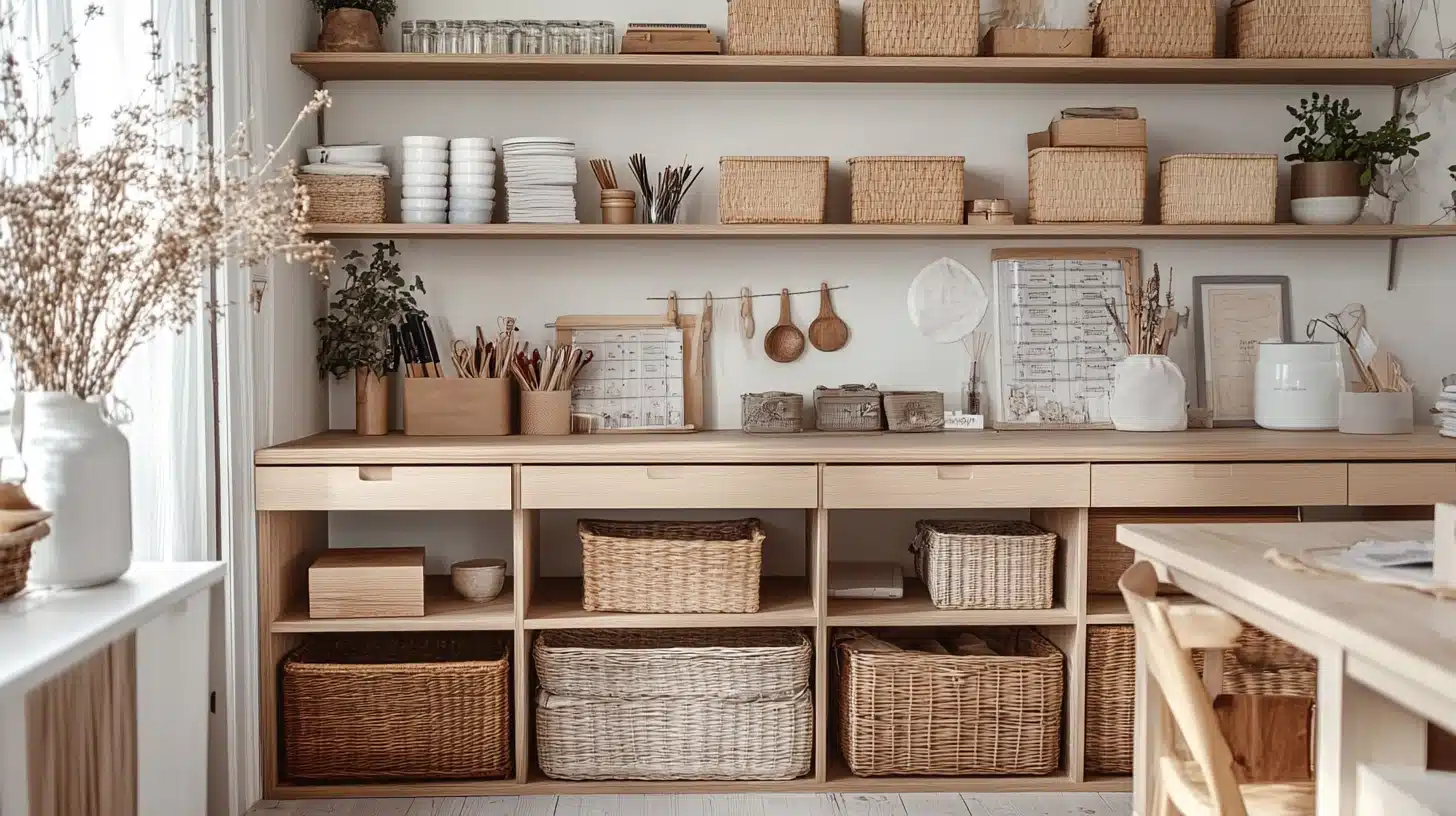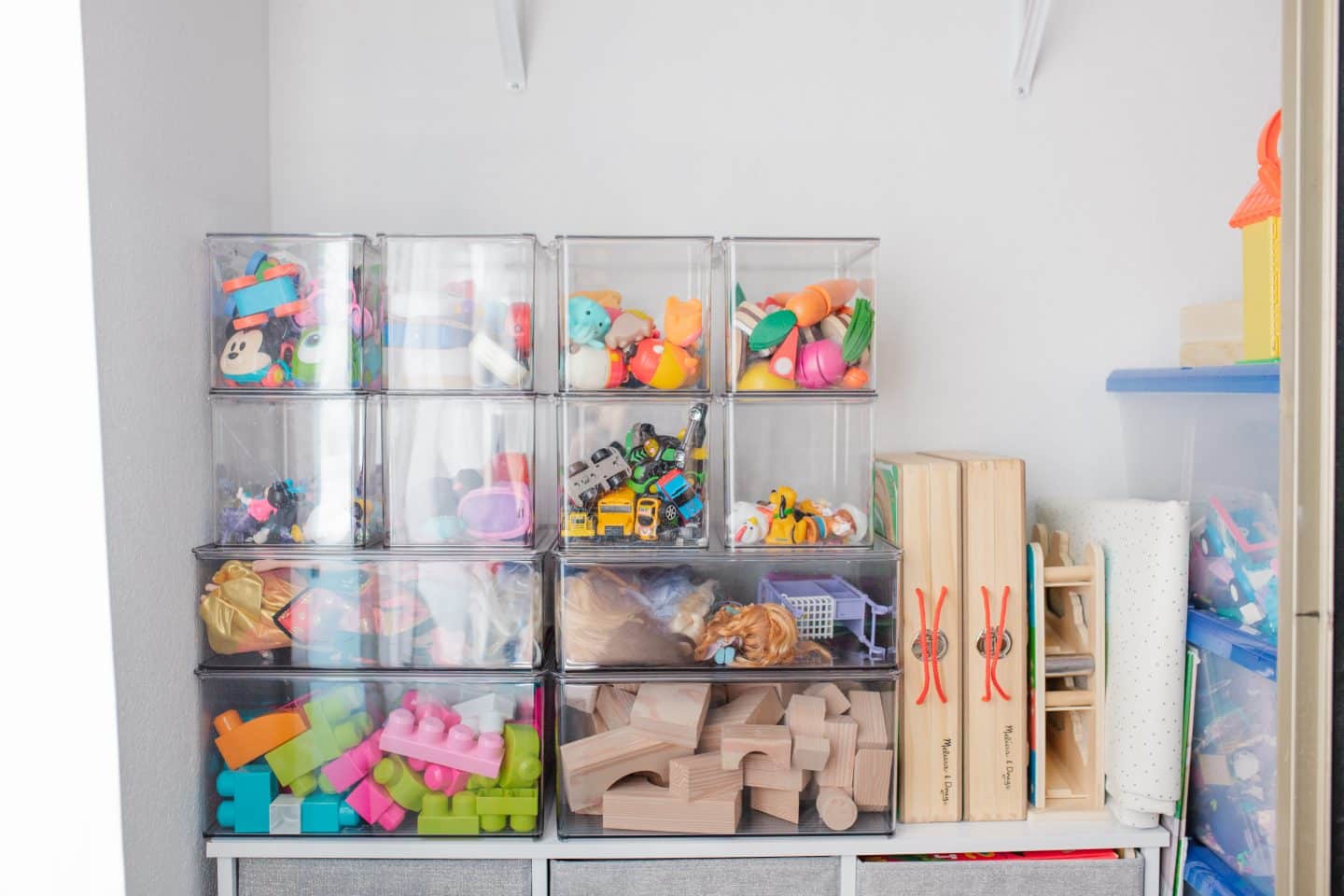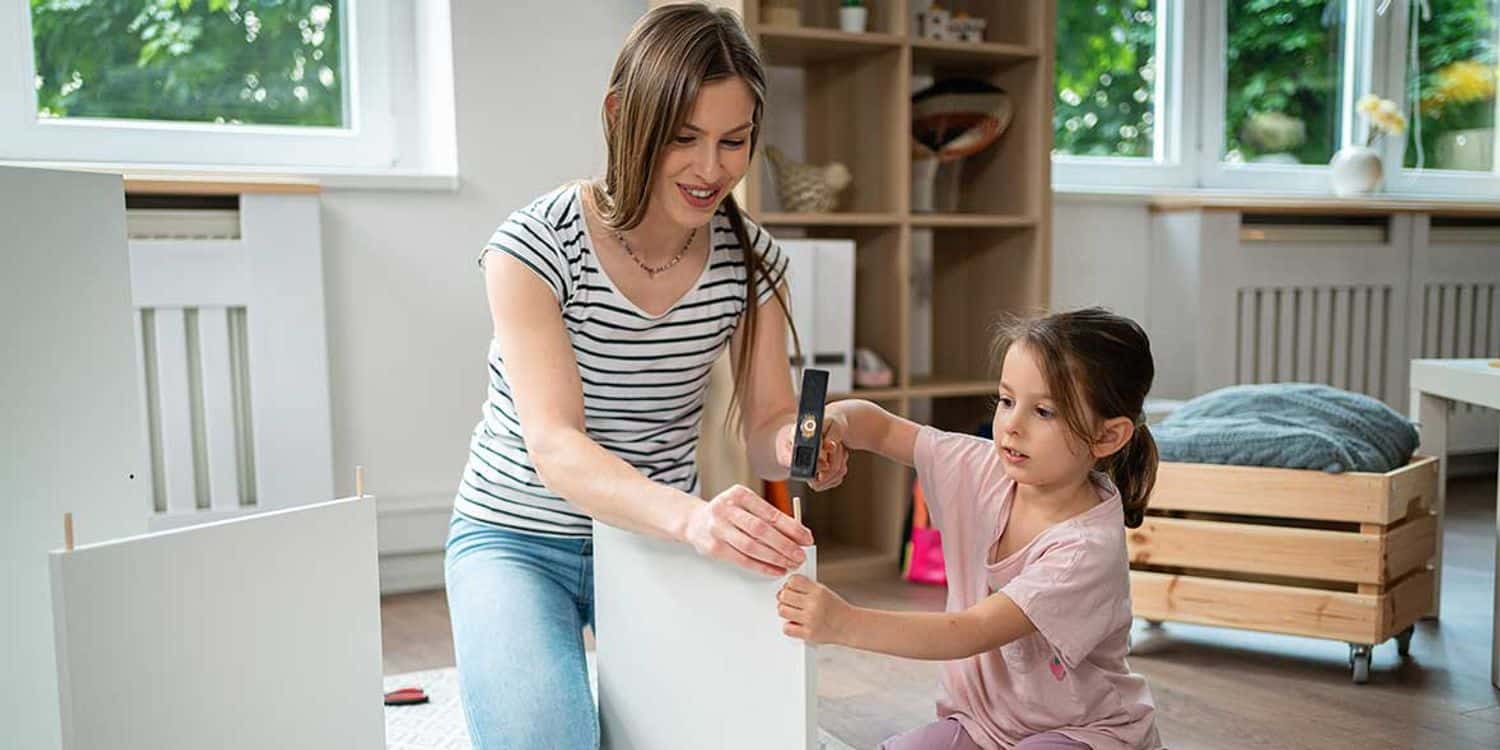
When you’re raising a family, staying organized at home can feel like an uphill battle. Between school papers, toys, and everyday essentials, clutter multiplies quickly—with the average family home containing over 300,000 items, it’s no wonder we feel overwhelmed. But with the right systems in place, any family can create an organized home that stays that way.
As a mom of 5 energetic kids ranging from toddler to elementary school age, I’ve learned through years of trial and error (and mountains of Legos) what actually works in a busy household. I’ve compiled 35+ practical, family-tested organization solutions that have saved my sanity even with all my little ones in the mix, so you can transform your home from chaotic to calm without losing your mind (like I nearly did)!
Getting Started with Home Organization for Families
Family Command Centers
The family command center transformed our household management. Your command center doesn’t have to be fancy—mine started on the back of my kitchen door with some basic organizational supplies.
Here’s what works best for family command centers:
- Design a centralized hub with a family calendar, meal planning, and important notices (like kids’ school or daycare calendars or important forms)
- Create individual slots/folders for each family member’s papers and permission slips
- Include a dedicated charging station for family devices to prevent morning technology issues
- Implement a visual chore chart system that works for all ages
- Incorporate a “coming up this week” section to keep everyone prepared
The most effective element was color-coding everything by family member. My 8-year-old knows anything in purple is hers, while my 7-year-old looks for green. This simple system means kids can find their materials without constant questions about where their permission slip or homework might be.
Entryway Drop Zones
I used to trip over shoes and backpacks regularly until I created proper drop zones. The entryway is your home’s first line of defense against clutter, so it’s important to ensure it works for your family.
For an effective drop zone, be sure to:
- Install individual hooks at child-appropriate heights for backpacks and jackets
- Create designated shoe storage for each family member (we use bins underneath cubbies)
- Design a mail sorting system that prevents paper buildup
- Add a “grab and go” station for frequently needed items
- Implement seasonal rotation containers for weather-specific gear
- Include key hooks for car keys that are out of reach of any children (just trust me on this one!) to avoid losing your keys
I learned that hooks need to be at kid height—otherwise, everything still ends up on the floor.
Toy Organization Systems

Toy clutter presents a significant challenge for most parents. Children actually play more creatively with fewer options available to them.
These toy organization strategies have proven effective:
- Develop a toy rotation schedule to reduce available toys by 50-75%
- Use picture-labeled bins for easy child-maintained organization
- Create play kits that bundle related items for quick setup and cleanup
- Implement the “one in, one out” rule for maintaining toy quantities
- Design vertical toy storage to maximize floor space in play areas
Toy rotation was particularly transformative in our house. For creative supplies, clear containers and label systems make a world of difference.
For creative supplies that tend to create the most mess, I’ve found some excellent strategies for organizing kids’ craft supplies that keep materials accessible but contained. Clear containers and label systems make a world of difference here.
Kitchen Solutions for Family Meal Success
The kitchen functions as command central for family life, and getting it organized has saved countless hours each week.
Try these kitchen organization ideas:
- Set up kid-accessible snack zones for independent food access
- Create a meal planning station with recipe organization
- Implement refrigerator zones with clear containers for visibility
- Design a lunch-packing station with all supplies in one location
- Use drawer dividers to organize kids’ dishes and utensils at their height
The lunch-packing station has been particularly useful during busy mornings as my older children now pack their own lunches
Bedroom Organization for Peaceful Sleep Spaces
Bedrooms should function as restful spaces, but they often become collection points for everything. Simplifying is key, especially in children’s rooms.
For calm, organized bedrooms:
- Implement under-bed rolling storage for seasonal clothing
- Create simplified clothing systems with limited daily options
- Design nighttime and morning routine stations for independence
- Use vertical wall space for book and treasure display
- Develop closet organization systems based on children’s heights and abilities
Morning routine stations have proven particularly effective for our family, significantly reducing our morning chaos.
Bathroom Systems for Multiple Users
With four people sharing one bathroom, managing this space initially presented significant challenges.
These bathroom organization ideas have improved our morning routines:
- Create individual toiletry caddies for each family member
- Design morning routine baskets with all needed items
- Implement color-coded towel systems with personalized hooks
- Use drawer dividers for small item containment
- Install shower caddies at appropriate heights for children
The color-coded towel system appears simple but has been remarkably effective.
Paper Management Made Simple
Paper clutter presents one of the most persistent organizational challenges. Now we maintain systems that keep important documents accessible while preventing accumulation.
Try these paper management strategies:
- Develop a 48-hour paper processing system for all incoming papers
- Create digital archives for children’s artwork and school memorabilia
- Design homework stations with supply caddies for each child
- Implement a simple file system for important family documents
- Use magnetic surfaces for displaying current papers needing attention
Digitizing children’s artwork required some emotional adjustment, but now my children participate in deciding what to keep.
Storage Solutions That Grow With Your Family

One important lesson of parenthood is that children’s needs evolve constantly. I’ve economized by investing in adaptable storage rather than age-specific solutions.
For flexible family storage:
- Choose convertible furniture that adapts to different life stages
- Implement modular storage systems that reconfigure as needs change
- Create seasonal rotation systems for clothes and gear
- Design shareable storage for items passed between children
- Utilize vertical storage to maximize limited space
Seasonal rotation systems have been essential for managing clothing and sports equipment without requiring extensive closet space.
Maintenance Systems for Long-Term Organization
Establishing an organization is only the beginning—maintaining systems presents the greater challenge. The key is creating sustainable routines that involve the entire family.
These maintenance strategies help preserve our organizational systems:
- Establish daily 10-minute family reset routines
- Create weekly focused sessions for one area at a time
- Implement seasonal organization events for times like back-to-school and post-holidays
- Design decluttering routines before birthdays and gift-receiving occasions
- Develop visual cleaning checklists appropriate for each child’s age
Our 10-minute evening reset has become the most important habit for maintaining order.
When we need deeper decluttering, I apply minimalist decluttering techniques to transform how our family thinks about possessions and space. This makes the daily household management much easier and more sustainable in the long term.
Frequently Asked Questions
How can I get my children to maintain organizational systems?
Use picture labels for younger kids and clear instructions for older ones. Start small, establish consistent routines, and offer positive reinforcement. Focus on systems that children can easily understand and use by themselves.
What are some budget-friendly organization solutions for families?
Repurpose existing items like shoe boxes for drawer dividers and mason jars for storage. Shop Dollar Stores for inexpensive organizers and create DIY labeled bins.
How do I handle the constant influx of papers from school and activities?
Empty backpacks daily and sort papers into three categories: action required, reference, and memorabilia. Handle action items immediately and limit memorabilia to one container per child yearly.
What’s the best way to organize shared bedrooms for children?
Give each child defined spaces with personal labels and color-coding. Use under-bed storage for seasonal items, create individual display areas, and utilize vertical storage solutions to maximize limited space.
Final Thoughts
Creating an organized home with children isn’t about perfection—it’s about implementing practical systems for your unique family. By incorporating these solutions, you’ll reduce stress, save time, and teach children organizational skills they’ll use throughout life. Start with your family’s biggest pain points, maintain consistency, and adjust as your family evolves. Remember that organization is a process, not an end state—the goal is a functional space where everyone can find what they need and contribute to maintaining order. Start small, celebrate progress, and find what works for your specific situation.
